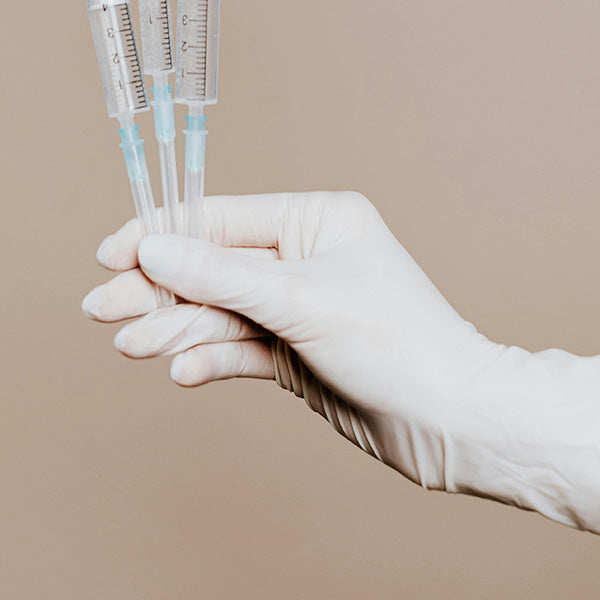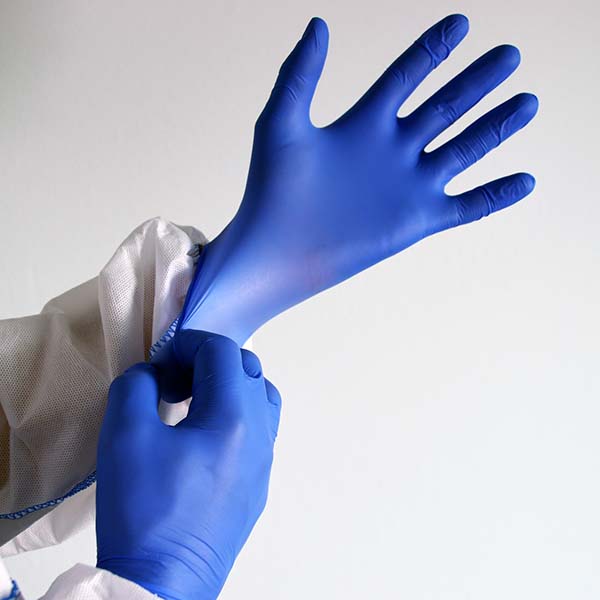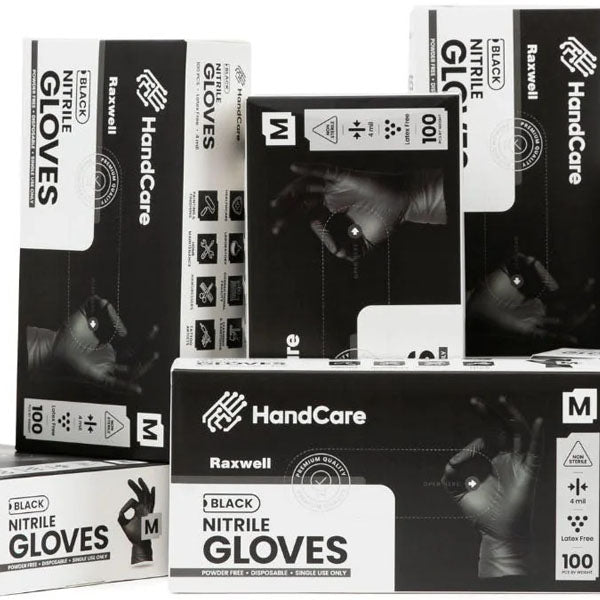Latex gloves, sometimes called rubber gloves, have been a staple for many years to protect hands in a variety of situations, but for many people they can do more harm than good.
If you’ve ever taken off a pair of latex gloves to find yourself with a hand rash, you might be one of the many folks out there who either have a latex allergy or sensitivity to latex proteins.
The good news is that there are a ton of options out there that can keep your hands safe without triggering a reaction, and we just so happen to be experts on the best ones.
In this article, we’ll break down what latex allergies are and why they happen, what types of gloves make good alternatives to latex, and which ones are really the best for most people with latex sensitivities.
(P.S. Not to spoil that last part, but if you’re short on time, you can always just check out our selection of nitrile gloves. As we talk about below, they’re really the best choice on the market.)
At a glance:
What Is A Latex Allergy?
A latex allergy is an immune response to the proteins found in natural rubber latex, which is a product of the rubber tree. When a person with a latex allergy comes into contact with latex protein, their immune system decides it’s a harmful invader and begins fighting it off.
That tussle with the latex proteins involves the creation of antibodies, which stick around in the body. The next time the body comes into contact with latex protein, those antibodies ring the alarm again and the body mounts an even stronger response.
As you can tell, there’s a bit of a snowball effect here, known as sensitization, in which the body’s reactions to latex become more intense.
Put in practical terms, if you’re wearing gloves as part of your job, you probably change them frequently. The repeated latex exposure day in and day out can turn into a worse reaction over time.
The latex allergy symptoms that a person feels while in the midst of an allergic reaction are the result of the immune response. Symptoms can range from mild to severe and can include:
- Itching
- Skin redness, rash, or hives
- Allergic contact dermatitis, which can be caused by chemical additives
- Sneezing
- Runny nose
- Cough
- Throat swelling
- Difficulty breathing
- Anaphylaxis (which is life threatening!)
Most people experience the more mild latex allergy symptoms. Given the risk of developing more severe reactions to latex over time, though, it’s a good idea to consider avoiding it entirely if you’re experiencing mild irritation after wearing latex gloves or coming into contact with latex products.
Hypoallergenic Disposable Glove Options
Thankfully, these days there are a number of non latex gloves on the market. Two of the most popular are nitrile and vinyl.
Nitrile Gloves
Nitrile gloves are made from a synthetic rubber called acrylonitrile butadiene. Since they’re not made from a natural material, they don’t have any proteins for the immune system to react against. This means they’re unlikely to irritate skin, even with multiple exposures over long periods of time.
Nitrile gloves provide many of the same benefits as latex gloves, and in some ways are even superior to them. They’re a go-to in a variety of industries, from health care workers to tattoo artists to auto mechanics and beyond, that want to avoid latex without compromise.
Vinyl Gloves
Vinyl disposable gloves are also made without natural materials, which means they don’t have the proteins necessary to cause an allergic reaction. They come from the same material, PVC, as the pipes in your home, albeit quite a bit thinner.
Vinyl gloves are just different enough from those pipes to be a little porous, though, which means they provide very limited protection from chemicals. They’re also less elastic than latex or nitrile gloves, which makes them more prone to tearing.
Vinyl gloves are much more affordable than many other types of disposable gloves, which makes them ideal in cases where their drawbacks aren’t as much of an issue. They are best used for lower risk settings, like food preparation and some medical exams.
Why Nitrile Gloves are The Best Gloves for Latex Allergy
As a relatively affordable, latex free disposable glove that provides excellent protection in a range of settings, nitrile gloves are a clear top choice for people who suffer from a latex allergy.
There are a number of ways nitrile meets and even exceeds the performance of latex gloves, among them:
- Durability - Nitrile is elastic by nature, which makes it just as resistant to rips, tears, and punctures as latex rubber. This makes them useful in settings where physical protection of the hands is necessary.
- Chemical Resistance - Nitrile is more resistant than natural rubber latex to many hazardous and/or corrosive chemicals. It’s always important to check the MSDS for whatever you’re working with, first, though, as no glove is appropriate for all situations.
- Touch Sensitivity - Nitrile gloves perform well at lower thicknesses, which allows them to provide a great deal of the same touch sensitivity and dexterity that latex gloves are valued for.
- Reduced Risk of Sensitization - This might be an obvious one at this point, but even people who don’t have allergic reactions can develop latex allergy symptoms over time with enough exposure to latex. Choosing nitrile avoids all of that risk.
- Cost - Thanks to their increasing popularity, nitrile gloves can cost around the same price as latex gloves. Depending on the thickness and the manufacturer, they’re sometimes even cheaper.
All told, nitrile gloves are a great choice for a robust, versatile non-latex disposable glove for most people.
A Note on Powdered Gloves
All disposable gloves, including nitrile, can sometimes come in versions that include a fine powder within the glove. This is a holdover from the early days of latex gloves, meant to make them easier to put on.
That powder can cause irritant contact dermatitis, another type of skin rash, in people with sensitive skin. If you’re switching to nitrile gloves to avoid allergic reactions, make sure they’re powder free gloves.
Where to Buy Hypoallergenic Disposable Gloves
As latex sensitivities have become more common, it’s been much easier to find gloves that won't cause allergic reactions. If you’ve looked it up online, you’ve probably seen a wealth of vinyl or nitrile glove suppliers on Amazon or other big sites. There’s also a ton of options at hardware stores or big box stores like Walmart.
There are two risks you take with purchasing nitrile, vinyl, or other non-latex gloves from those places, though.
First, some glove manufacturers use chemical additives in the process of making disposable gloves in order to cut costs. Those additives might not contain latex proteins, but they can still cause allergic contact dermatitis or other adverse reactions in people with sensitive skin.
Second, many glove resellers put big markups on their gloves, which can be problematic if you’re purchasing a lot of gloves for the workplace.
The best place to get nitrile gloves or other hypoallergenic disposable gloves, then, is a reputable business with the experience and relationships with manufacturers to sell great gloves at wholesale prices.
That’s where we come in.
We’ve spent several decades offering the best balance you’ll find between quality and cost in the disposable glove business. Check out our selection if you’re ready to find your new favorite pair of latex-free gloves.






